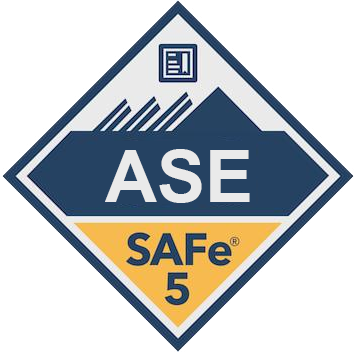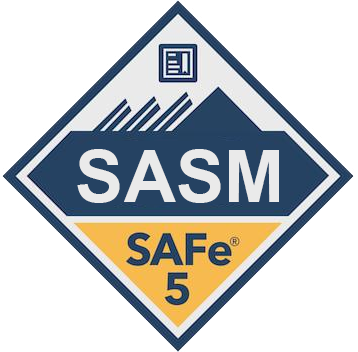Adopting Agile Methodology to Revolutionize Human Resources: Agile in HR
Introduction:
In a constantly evolving business landscape, traditional Human Resources (HR) practices are often slow, inflexible, and disconnected from organizational goals.
Agile methodology, initially developed for software development, has been gaining popularity as a transformative approach that can be successfully applied in various realms, including HR. This article explores the concept of Agile in HR and provides real-world examples of how organizations have successfully implemented Agile practices in their HR operations.
Understanding Agile in HR:
Agile HR refers to the application of Agile principles and practices within the HR function. It aims to create a more flexible, responsive, and customer-centric HR function that aligns with the overall business objectives. This methodology focuses on empowering HR teams to work collaboratively, respond swiftly to changing business needs, and promote a culture of continuous improvement.
Real-world Examples of Agile in HR:
1. Talent Acquisition:
One of the core areas where Agile methodology can significantly impact HR is talent acquisition. By adopting Agile practices, HR teams can transform the traditional, linear recruitment process into a more iterative and adaptive one. Organizations can implement Agile techniques like Kanban boards or daily stand-up meetings to ensure seamless communication, speed up decision-making, and align recruitment activities with changing business needs.
Example: Company X, an IT consulting firm, used Agile in HR to streamline their recruitment process. They organized regular sprints to evaluate candidate profiles, conduct interviews, and make quick hiring decisions. This approach not only reduced the time-to-hire considerably but also allowed the HR team to adjust their strategies based on market trends or evolving client requirements.
2. Performance Management:
Agile HR is also revolutionizing traditional performance management processes, which are often criticized for being time-consuming and detached from employees’ daily realities. Applying Agile principles like real-time feedback, continuous goal-setting, and frequent check-ins enable HR teams to facilitate a more collaborative, adaptive, and growth-oriented performance management experience.
Example: Organization Y, a multinational corporation, adopted Agile performance management practices by implementing regular feedback sessions, peer-to-peer recognition, and self-assessment tools. This Agile approach created a culture of ongoing learning and development, significantly improving employee engagement, performance, and overall organizational productivity.
3. Learning and Development:
Agile methodology provides HR teams with the tools and mindset required to adapt learning and development strategies rapidly. By embracing Agile practices, organizations can analyze skills gaps, identify learning priorities, and deliver targeted training programs in a more timely and efficient manner, improving employee growth and overall organizational agility.
Example: Company Z, a startup in the technology industry, implemented Agile learning and development practices to accelerate skill development among their employees. This involved short, focused training sessions called “learning sprints” that provided quick bursts of knowledge, followed by immediate implementation opportunities. This Agile approach allowed the workforce to acquire new skills swiftly and respond adeptly to market demands.
Here are some examples, data on Agile in HR and implementation
Example 1: Agile Performance Management
In traditional performance management, employees are typically evaluated on an annual basis through a formal performance review process. Agile HR, on the other hand, promotes continuous feedback and coaching to drive performance improvement. This can be implemented by using agile performance management tools that enable real-time feedback and goal tracking. For instance, managers and employees can utilize a performance-tracking system that allows them to set goals, provide feedback, and track progress regularly. This iterative and collaborative approach helps employees to continuously align their goals with the evolving needs of the organization and receive timely feedback for improvement.
Example 2: Agile Recruitment
Agile HR can also be applied in recruitment processes to streamline hiring and enhance the candidate experience. Instead of following a traditional linear recruitment process that often takes a significant amount of time, agile recruitment adopts a more iterative and flexible approach. HR teams can create cross-functional recruitment teams that work together to define the requirements, design job ads, and conduct interviews. These teams can quickly adapt their strategies based on feedback from each stage of the recruitment process, allowing more efficient and effective decision-making. This approach ensures that the company can attract and hire top talent promptly, ultimately improving overall organizational performance.
Example 3: Agile Learning and Development
Traditional learning and development programs often involve lengthy training sessions or workshops held at fixed intervals. In an agile HR environment, learning and development are more personalized and flexible. HR teams can leverage online learning platforms and microlearning modules that enable employees to learn at their own pace and access relevant content as needed. Additionally, agile HR teams can organize cross-functional training sessions or lunch-and-learn sessions for employees to share knowledge and skills. This approach ensures that learning and development initiatives align with current business needs and that employees are equipped with the necessary skills to adapt to evolving demands.
Example 4: Agile Employee Engagement
In traditional HR, employee engagement surveys are conducted annually or biannually to gauge employee satisfaction and identify areas for improvement. Agile HR takes a more frequent and continuous approach to employee engagement. This can be done through regular pulse surveys or feedback sessions where employees can openly express their experiences, suggestions, and concerns. HR teams can then utilize this real-time feedback to adjust policies, processes, and initiatives to address the identified issues promptly. By actively involving employees in the decision-making process, organizations can foster a culture of trust, ownership, and engagement.
Note: The examples provided are hypothetical and only serve as illustrations of how agile approaches can be applied in HR. Actual implementation and effectiveness may vary depending on the organizational context and specific requirements.
To apply for Agile in HR
Below are the recommended steps to start implementing agile in HR
1. Educate yourself: Start by understanding Agile principles and methodologies. Read books, articles, and case studies to gain a deep understanding of how Agile works. Consider attending Agile training or workshops to become familiar with Agile concepts.
2. Create an Agile HR team: Assemble a cross-functional HR team that represents different roles within HR, such as recruitment, performance management, training, and development. Ensure that the team includes both HR professionals and stakeholders from different departments across the organization.
3. Define HR goals: Identify HR goals or challenges that can benefit from Agile practices. This could include areas such as candidate experience, employee engagement, performance reviews, or training programs. Determine specific objectives that can be achieved using Agile methods.
4. Prioritize HR tasks: Use techniques like Agile backlog management or Kanban boards to prioritize HR tasks within the team. Break larger HR projects into smaller manageable tasks or user stories that can be worked on in iterations known as sprints.
5. Adopt Agile rituals: Implement Agile rituals such as daily stand-up meetings where team members share updates on their tasks, progress, and challenges. Hold regular retrospectives to reflect on lessons learned and improve HR processes continually.
6. Embrace flexibility and collaboration: Agility thrives on collaboration and adaptability. Encourage HR team members to work closely together, share knowledge, and collaborate with other departments. Be open to changing plans based on feedback and emerging needs.
7. Use Agile HR tools: Explore Agile project management tools like Jira, Trello, or Asana to manage HR tasks and track progress. These tools can help visualize work, manage backlogs, and monitor the overall status of HR projects.
8. Continuously improve: Agile is based on the concept of continuous improvement. Regularly review HR processes, gather feedback from stakeholders, and adapt accordingly. Foster a culture of experimentation, learning, and iteration within the HR team.
9. Measure success: Identify key metrics and performance indicators to measure the success of Agile HR initiatives. This could include metrics like time-to-hire, employee satisfaction, or training effectiveness. Analyze these metrics regularly and make data-driven decisions to improve the HR processes further.
10. Promote Agile mindset: Spread awareness and promote an Agile mindset within the HR department and the whole organization. Encourage open communication, adaptation, and agility as core values in HR practices.
Transitioning to Agile in HR involves a collaborative effort from various stakeholders to ensure a smooth and effective implementation. Here are some key individuals and groups that should be involved in the process:
HR Leadership Team: The top leadership in the HR department should drive and support the Agile transformation. They set the vision, allocate resources, and communicate the importance of the transition to the entire team.
Agile Coaches/Consultants: Experienced Agile coaches or consultants can provide guidance, training, and expertise in Agile methodologies. They help HR teams understand Agile principles, practices, and techniques and how they can be applied effectively in HR processes.
HR Managers and Leads: These individuals are responsible for various HR functions (recruitment, performance management, training, etc.). Their involvement is crucial as they’ll be leading the Agile implementation within their respective areas.
Cross-Functional Teams: Agile emphasizes cross-functional collaboration. Teams should be comprised of members from different HR functions to ensure a holistic approach and smooth communication. For example, a team might include members from recruitment, learning and development, and employee relations.
IT and Technology Teams: If your HR processes are closely integrated with technology or software systems, involving IT teams is important to ensure seamless integration of Agile practices with the technical aspects of HR.
Employee Representatives: It’s beneficial to involve employee representatives or representatives from various levels of the organization. This helps to gather insights and feedback from employees who are directly impacted by HR processes and changes.
Change Management Specialists: Agile transitions involve change, and having change management specialists on board can help manage the transition effectively. They can help anticipate resistance, address concerns, and develop communication plans.
Communication Specialists: Clear communication is vital during any transition. Communication specialists can help craft messages, manage internal communication channels, and keep everyone informed about the Agile adoption progress.
Key Stakeholders: Depending on your organization’s structure, involve stakeholders from other departments that closely interact with HR, such as finance, legal, and operations.
Agile Champions: Identify enthusiastic individuals within the HR team who are passionate about Agile and can act as internal advocates, helping to drive the adoption and address questions.
Frontline Employees: Those who will be directly impacted by the changes in HR processes should also be involved in the transition. Their insights and feedback can help refine the Agile approach to better suit their needs.
Senior Management and Executives: The support of senior management and executives is crucial for successful Agile adoption. They can help allocate resources, provide strategic alignment, and remove organizational roadblocks.
Remember that Agile in HR is an iterative process, and it may take time to fully implement Agile practices. Be patient, learn from experiences, and continuously adapt and improve your Agile HR approach.
Conclusion:
Agile in HR includes Agile methodology is revolutionizing Human Resources by allowing organizations to become more adaptable, customer-centric, and responsive. By embracing Agile practices in areas like talent acquisition, performance management, and learning and development, HR teams can redefine their role as strategic partners driving organizational success. The real-world examples discussed in this article demonstrate that Agile HR practices can lead to improved efficiency, employee satisfaction, and, ultimately, better business outcomes Agile In HR.
For more posts like this follow Agile Digest social Pages or subscribe our newsletter:
Website: https://agiledigest.com/
Facebook: https://www.facebook.com/agiledigest/
LinkedIn: https://www.linkedin.com/company/agiledigest/
YouTube: https://www.youtube.com/@AgileDigest








































































